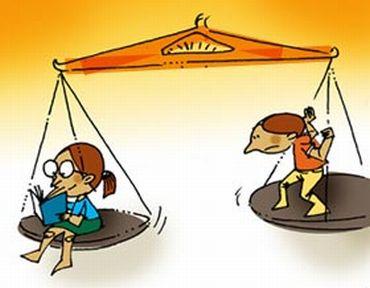 | « Back to article | Print this article |
Cracking different designs: Sail into the NIFT, NID and more
Perhaps no other discipline evokes as much glamour and celebrity-steeped power as the field of design. However, if you want admission to one of the many design campuses burgeoning across the country, you will have to epitomise research, application and dedication.
Identifying your design calibre
Before you attempt to crack any of the design entrances, it is important to identify your vital skills and nurture them. A design student must evolve into an artist, technocrat, thinker, businessman and a visionary.
"Aspirants should have good visual and spatial aesthetics, interest in reading and creative writing, research, people skills, observational skills, awareness about lifestyle trends, and interest in different national and international communities," advises Vaibhavi Ranavade, Associate Professor and HOD - Fashion Design, Symbiosis Institute of Design.
Most selection committees look for these qualities. But some institutions go a step further. "NID is unique as it focuses on problem-solving capabilities and intellect, and has a creative, educational culture that promotes design competencies and sets standards in design education. The rigorous development of the designer's skills and knowledge through a process of 'hands on minds on' is what makes the difference," says Vibha Mitra, Chief Mentor, Opus, a Kolkata-based coaching institute.
Typically, there is no prescribed formula to crack design entrance tests, and often there is no right or wrong answer. Dipen Desai, an alumnus of NID, expands further, "NID is very subjective. So it is very difficult to know what they are looking for. They want to know your creativity, adaptability, and eagerness to learn from what someone has to offer. Ultimately, the suitability and marketability of a design matters." And this maxim holds good for almost all well-equipped design institutes.
The author is a fashion communication consultant and visiting faculty at leading design institutions in the country.
Choosing the right course
Almost all design institutes have a range of three to four-year (or more) undergraduate (UG) bachelor's programmes, and two-year (or more) postgraduate (PG) master's programmes. A few of them also have advanced courses.
The UG pre-requisite is 10+2 or equivalent, and the PG pre-requisite is a bachelor's degree or graduation (sometimes in a required subject). The duration and cost of each course varies from institute to institute.
Must-do: Check if the course offers a bachelor's or postgraduate degree, or a diploma certificate.
NID offers a Post Graduate Diploma Programme in Design (PGDPD) and a Graduate Diploma Programme in Design (GDPD). NIFT offers Bachelor's in Design (B Des) and Master's in Design (MDes).
Srishti School of Design has a Foundation Studies Programme, Professional Diploma Programmes and Advanced Diploma programmes. Other colleges have similar courses.
Mastering key design skills
Creative skills
Vibha: "Design is about having an eye for detail, breaking rules and setting trends. Being a keen observer in your daily life can help you conceptualise ideas. You need to have a natural flair for illustrating. Having an artistic flair with colour, materials, textures or fabrics is beneficial."
Vaibhavi: "Hobbies like sketching; photography; travelling; public speaking; dramatics; and appreciation of performing arts; films; and music -- all prove helpful."
Technical skills
Vibha: "Mastery over new and old tools is a must to produce and implement your solutions. In other words, a strong combination of basic tactile and virtual knowledge works wonders."
Vaibhavi: "Working knowledge of any digital software like illustrator, Photoshop, and more, could come in handy. Foreign languages like French or Italian could be learnt."
People skills
Vibha: "In the design industry, establishing relationships, maintaining mutual respect, having a positive outlook and ultimately motivating others to seek you out is important to succeed." Let's say that communication makes the creative world go round and build on it.
Business skills
Vibha: "In order to advise clients, you need to clearly understand their business challenges, trends and options. Understanding the nuances of retail, trade and business will help."
Choosing a specialisation
Broadly, specialisation is offered in the following design fields -- fashion, leather, accessory, textile, knitwear, fashion communication, apparel production, graphic and communication.
Alternatively, you can also opt for one of the lateral design courses -- product, craft, space, transportation, animation, exhibition (spatial), ceramic and glass, furniture and interior, user experience or interface, film and video, retail, make-up, sustainability, craft management, entrepreneurship, and the like, offered by some institutes. Do your research and mention the desired field at the time of application. Be aware that the seats are limited, so focus well.
Understanding the entrance examinations
You can either appear for the National Entrance Examination for Design (NEED) conducted by NID, the Common Entrance Test (CET) conducted by SNDT Women's University under Government of Maharashtra, or for other respective examinations conducted by other institutions. NID as well as several other design institutes take the NEED score into consideration for admission.
The CET score is accepted by SNDT as well as many other institutes. Note that SNDT and NID do not handle the admission procedures directly in the associate/consortium institutions, which are done separately by the respective institutions.
Many undergraduate and postgraduate institutions have courses courses have separate entrance examinations. You will have to appear for a national or internal examination (if it is a solitary institute without branches). For instance, NIFT conducts its own written test (February 2011). Other institutes also have similar examinations with slight differences in exam name or style.
Selection for advanced courses is based on a graduate or postgraduate degree, work experience (in the desired design sector), personal interview and portfolio (a collation and compilation of personal and professional artwork that has to be presented precisely and creatively). This should ideally reflect your passion for the subject.
Normally, there are two tests in the first stage of NIFT.
1. General Ability Test (GAT) for all courses
2. Creative Ability Test (CAT) for design courses OR Managerial Ability Test (MAT) for apparel production, management and technology courses
There are two other tests in the second stage as well.
3. Situational Test for design courses
4. Personal Interview (PI) followed by a Group Discussion (GD) phase (only for PG courses or Master's.)
At NIFT, the final score is calculated based on a ratio of marks and varies across Bachelor's and Master's programmes. Typically, it is 40 per cent GAT, 40 percent CAT, 20 per cent Situational Test (Bachelor's programme in design); 60 percent GAT, 40 percent MAT (Bachelor's programme in apparel production); 40 per cent GAT, 40 per cent MAT, 10 percent GD and 10 per cent Interview (Master's programmes in design, management and fashion technology). The score decides the merit list and the city/centre you are allotted. However, this ratio is subject to change at NIFT and may vary at other institutions. It is suggested that you thoroughly read the prospectus of various institutions before you apply.
The NID entrance test has two or three phases after the form-filling stage.
1. Design Aptitude Test for Post-Graduate Diploma Programme -- GDPD or the National Entrance Exam for Design for Graduate Diploma Programme in Design (GDPD).
2. Studio Test followed by Personal Interview for undergraduate and postgraduate courses.
3. Portfolio Review and Personal Interview (for some PG and advanced courses).
Like GAT and CAT, NEED and CET test your design aptitude, mental ability, creativity, sketching, communication skills and world view. This written examination is followed by a Studio Test and Personal Interview. The number of seats is usually limited. So if you miss these examinations or do not crack them, you can appear separately at the institutions as per their datelines.
Some institutes like the NID and Srishti School of Design go beyond the student's previous academic qualifications and vigorously hunt for that wee bit of extra "creativity, dynamic thinking and perception." They also seek "trans-disciplinary" design element and lateral collation through student portfolio.
Important design exams in focus
National Entrance Exam for Design (NEED)
Forms available at: Nationalised banks, designated Bank of India branches, via a demand draft request to NID (Ahmedabad), or downloaded off the NID website (and the completed application form to be sent along with a Demand Draft to NID).
- Date of examination: January
- Date of Studio Tests/Interview: April
CET
Availability of application forms: Online or at SNDT Women's University, Mumbai
Important Dates (tentative):
- Date of examination: May
- Date of Studio Tests/Interview: To be announced
For more details: sndtcet.in
General Ability Test (GAT)
This written test (usually of two hours) is an objective test that examines the candidate's basic intelligence and aptitude for logical thinking. It is conducted for all Bachelor's and Master's programmes. Institutions like NIFT have negative marking for every wrong answer. You will have to be clear about the rules before you appear.
Typically, the test components include the following.
- English language. Language is the basis of all communication in today's 'flat' world and ensures a smooth flow of ideas. Vibha feels it helps to communicate with your clients, and analyse and critically sift data into integral components. Vaibhavi has a pragmatic approach, "English is the language of business communication and the medium of instruction for all educational programmes. So a verbal and written command over it is a pre-requisite. Proficiency in any other language can also be beneficial for some specific projects..."
- Quantitative skills. Although this may seem futile in a creative world, quantitative aptitude is essential to measure your analytical ability. The mathematics questions are rudimentary (high school-level) which need sheer time management and practice.
- Logic. This reasoning section tests your logical aptitude. Most logic and reasoning books and websites will have timed mock tests that you can work on. This needs regular forking of the mind to hone your skills.
- General knowledge. This is required to gauge your awareness of life, country, environment, and global trends. You can read periodicals, magazines and newspapers, and browse knowledge websites regularly for updates.
Important design exams in focus
Managerial Ability Test (MAT)
If you are appearing for an apparel production (Bachelor's course), or technology/management (Master's courses) at NIFT, you will be put through an objective Managerial Ability Test (MAT) that checks your "management effectiveness and interpersonal skills." Other colleges may have managerial ability questions in their written examinations. But the preparation can be the same for all. The NIFT exam has three segments.
- Vikalp (case study)
- Business Domain Test
- Logical Ability Test
Vibha Mitra's dos and don'ts for GAT, MAT
- Work diligently every day.
- This is an exam of timing. Try not to take more than 30 seconds for each question.
- Eliminate wrong choices. Examiners are looking not for a good or right answer, but the best answer.
- Work with any Word Power book for half-an-hour every day to score in the verbal section. It comprises almost 30 per cent of the paper.
- Spend half-an-hour to one hour reading newspapers, periodicals, magazines to up your general knowledge and current affairs knowledge.
- Do NOT be scared of Mathematics. THIS is the section where you score high marks.
- Practice and time yourself.
- Exercise your mind with logic and reasoning questions (available in books or on the Internet).
Some smart tips
Dos and don'ts for CAT
- Slot at least an hour a day for sketching.
- Be observant of daily life, people, products and activities. Have a sketchbook at all times.
- Don't apply too much pressure on the paper or the drawing medium while practising.
- Do not use the eraser at the drop of a hat. Avoid overdrawing as much as you can.
- Make a combination schedule of outdoor, product and people drawing every week.
- Play with colours to see how they blend and complement. Read up on colours and theories if possible.
- Experiment with different colour media -- dry pastels, ink, pencil, charcoal, oils, water colours, crayons, etc.
- Make the same sketch from various angles, distances and in different media.
Dos and don'ts for Situation Test
- Being observant helps. Study forms, shapes and sizes.
- Experiment with waste scrap, materials, textures and what you have.
- Deconstruct and study simple objects to understand their functioning.
- Read about design, aesthetics, culture and history.
- Don't make something as it usually is, try to break a norm and introduce something new.
- Always have a reason for your creation and an aspect of utility. Don't create for the sake of creation.
Dos and don'ts for Design Aptitude Test (DAT)
- Make a self-evaluation chart (or do a SWOT analysis) before you start preparing.
- Make a portfolio of your work. Display it creatively (but professionally).
- Don't leave any section untouched.
This 3-hour test at NIFT is for the designing courses and is used to determine if you can translate ideas into two-dimensional or depth-oriented prototypes via drawing and sketching. For instance, a couple of years ago, NIFT aspirants were asked to design and draw a three-dimensional chair (using dry colours) that portrays the professional characteristics of a doctor, artist, hitch hiker, magician or a social worker.
A short, 3-4 line explanation was also requested. Another one was to depict emotions like innocence, jealousy and surprise using colours in a given grid.
Preparation for CAT requires focus on memory, object, figure and product drawing, perspective and proportions, compositions, symbolism, landscapes, sequencing, optical illusion and picture analysis. The questions in this segment are radical and will force you to think out of the box. Sometimes a CAT-like test is combined with the written examinations at other colleges. Confirm before you appear.
Situation Test (ST)
If you are shortlisted (on the basis of the written entrance exams GAT and CAT at NIFT), you will be put through a Situation Test that evaluates your material handling skills and innovative ability. You have to create items with a given set of materials in an allotted time. This test pattern may vary at other institutes and can be named differently. But the inherent reason is to test your tactile creative abilities. Check before you appear.
"Students should not force themselves or buckle under pressure. Training institutes condition students to think in a certain way which may not be required. Thinking differently cannot be taught by people so quickly. Moreover, thinking out of the box comes from observation," says Rupinder Kaur, Assistant Professor, NIFT, Department of Fashion Communication. And that is what helps in Situation Test. Questions can vary from creating a vanity case, organiser to even a pair of slippers using common and off-the-beaten-track materials. You can browse the Net for some sample questions or ask students who have cracked any design examination.
The Design Aptitude Test (DAT)
This three-hour test (at NID) focuses on figuring out if you have a general mental ability and the aptitude for a subjective field like design. It comprises object drawing, dimensions, human figure drawing, proportions, story illustrations, colour concepts and schemes, visual reasoning, advertising, worldview, sensitivity to environment, and communication skills. The combination ratio of the topics varies every year. There are minor variations in questions for specialised courses.
Srishti and some other institutions have their own internal design examinations on the same lines. About the test, Srishti's website says, "It tests your logical and spatial aptitude, awareness about the world in general, drawing/ colour skills, visualisation skills and language skills." In any design aptitude exam, what matters is the way you visualise an idea and then convert it into a comprehensible form on paper (with both two-dimensional and three-dimensional aspects).
NID alumnus Dipen Desai shares, "When I appeared, the application form was detailed and was the first step to filter aspirants! In written (examinations), I don't think they (NID selection members) expect you to be great at sketching but expect you to understand form and proportion. If you are an amazing artist, you might as well go to a fine arts school." This evidently means you have to be good at sketching but may not have achieved perfection.
Studio Test (ST)
Based on written scores, you are called for a second phase of three to four-hour Studio Test followed by an interview (at NID, Ahmedabad). Postgraduate courses usually have group discussions. "Studio Tests involve 3-dimensional, basic and advance clay modelling, material manipulation, writing skills and doodling exercises. Confidence, timing and practice is of utmost importance here," shares Debasis Sengupta, Art Mentor at Opus.
Dipen recalls his studio test at NID. "I was given coloured paper, glue and an eight-by-eight grid on which I had to represent a crowded railway station. Materials test had me playing with paper, metal, screws, nuts, rubber bands, etc. to create fruit holders. It tests your common sense and spontaneity. Of course, it was challenging. My interview had a panel -- faculty members, psychologist, and a management honcho. Questions shifted from portfolio, family, and songs to anything!" This test is similar to the situation test at NIFT and a couple of other colleges. So, prepare well to break into this creative field.







